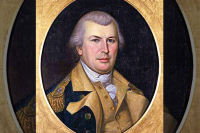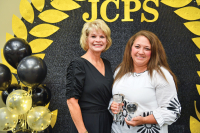The new watchdogs: After crisis, hospital board renews emphasis on oversight
Today at HRMC, 10 sets of eyes peer over the shoulders of the hospital administration, ready and willing to question every move.
Though the hospital had a board of directors in place when the hospital lost its Medicare and Medicaid certification a year ago, oversight arguably wasn’t the board’s strong suit. But today, the buck stops with the hospital board when it comes to avoiding another crisis.
In the months following the hospital crisis, it was out with the old, in with the new on the hospital board. The original board members either resigned or didn’t reapply for their terms. A host of Haywood residents, appalled by the hospital’s downfall, were more than happy to step up and play watchdog. When two seats became open in April, county commissioners were flooded with a staggering 37 applications (in contrast, many boards are happy when one person applies). Seven out of 10 sitting board members today are new since the crisis.
The clean sweep will continue in April, when long-time board member and chairman Glenn White will step down and the board is expanded by two. When that occurs, only two out of 12 board members will have been in place under Rice.
“It’s good to have those without experience, because they keep it fresh,” said Cliff Stovall, who was appointed to the board in June. “You don’t want to just do it the way that it’s always been done.”
Board members come from a wide range of backgrounds: a banker, a retired Army colonel, a former district attorney, a nursing instructor, to name a few.
Related Items
“I think it’s important to have people that aren’t entirely immersed in medicine, because it brings a different point of view,” said Pam Kearney, who also came on board in June.
Back to basics
Defining just how the board is supposed to function has been a top priority. Since the crisis, the board has had to do some serious reinforcing of its core mission — overseeing the hospital administration.
“We didn’t have any concept of what the board’s duties were,” said Roy Patton, who became a board member in June. “There had been more or less a structure for the board, but I don’t think that the board had ever learned to use it. The former CEO kept the board pretty much in the dark.”
That’s not the case anymore.
“The board’s role is oversight, and I think we’ve come to realize how much more important that is than we may have realized at one point,” said Patton.
In the drivers seat
The revamped hospital administration has made it much easier for the board to perform its duty as watchdog. Former CEO David Rice held a tight grip on the flow of information, so what the board knew about day-to-day hospital activities was limited.
“We asked questions in the past, too, but it’s the answers and responses that you get that are key,” said Mark Clasby, a board member who had served for a year and a half when the crisis hit.
“I think that the board was just somehow lulled into pretty much an acceptance of what Rice said was going on,” Patton said.
Consequently, HRMC’s loss of Medicare and Medicaid certification caught board members completely off guard.
But as the hospital’s culture began to change in the wake of the crisis, so did the relationship between the board and the administration.
“I think the thing that I see changing is that the board members and the administration are actually having dialogue and discussions,” said Kearney. “It’s not a one way street. The communication lines are now open, and board members are not denied access to information.”
Kearney said the board has demanded the larger role.
“I think the board really is driving it,” Kearney said.
Since the crisis, the board has put measures in place to make sure it’s not kept in the dark.
For example, an immediate notification process requires the hospital administration to notify board members of any incident affecting HRMC.
“It allows the board to be in the loop of information from day one,” said Kearney, “so we don’t read about it in the media or find out about it secondhand.”
In contrast, Rice kept such incidents a secret from the board. Board members were unaware of the brewing crisis a year ago that the hospital’s Medicare status was in jeopardy.
Board members also now attend exit interviews when any hospital inspection is completed, which “enables the board to learn firsthand if there are serious patient concerns,” said Kearney. “This was discouraged in the past.”
At a recent exit interview, surveyors even opened up the floor so board members could ask questions — something Kearney recognized as a real turning point for HRMC.
“There was not one person in the hospital who was going to make or break that survey, as was the case in the past,” she said.
Haywood County Commissioner Kevin Ensley, who along with other commissioners appoint the hospital board members, said the crisis should serve as a wake-up call to anyone serving on a board to be more diligent in their oversight. Too often, those at the helm of an organization can lull their board into complacency or charm them into compliance.
“If you tried to remove David Rice two weeks before that happened there would be a firestorm,” Ensley said. “The one good thing that has come out of this is all the boards in the county see you really have to watch what management is doing. We could all point our fingers at ourselves because people weren’t paying attention.”
Not afraid to ask
The idea of the board taking the wheel marks a sharp change from before the crisis, when decisions were often made in a unilateral manner by the administration.
“I don’t think that we would now be able to have that same reliance (one the administration),” said Patton. “I think we’re always going to be saying, is this right?”
Today, there is no shortage of questions for hospital administrators at board meetings.
“I can assure you that nobody leaves without getting questioned to the hill,” said board member Cliff Stovall, who was appointed in June. “There’s no timidity on the board. There are no wimps in the meetings I’ve been in.”
Board members hope a renewed emphasis on oversight and open communication will ensure they’ll never again be blindsided, as was the case a year ago.
Turnaround?
Though the hospital is still on a road to recovery, board members say there have been some key turning points since the crisis.
Patton says positive change began to take hold right away.
“I think that immediately, when things fell apart, some things started turning around,” he said. “All of a sudden, we had training going on, and more attention to the things that we hadn’t been paying attention to earlier.”
Stovall said one of the board’s biggest accomplishments since the crisis has been getting the hospital’s finances back in the black. The hospital’s lack of debt made this easier, he said.
“We did spend a lot of money just to keep going, but our money did not evaporate,” Stovall said.
Clasby said as of December, the hospital was ahead of its budget for the year — a positive but preliminary sign, since the fiscal year only started in October.
Board members also named the hiring of CEO Mike Poore as a key accomplishment.
“It’s just been a breath of fresh air for us,” Patton said.
Board members expressed mixed sentiments on whether the hospital has overcome one of its greatest challenges: regaining the community’s trust.
Stovall said he views the frequently full parking lot at the hospital as a sign that people are coming back.
“I think that’s an indication that people are using it, so it’s restored confidence,” he said.
Patton was a bit more hesitant.
“I would say yes, there has been some trust regained, but I don’t think that we’re to the point where we can say, we’ve done it now and we can relax,” he said.
Kearney also says there’s work to be done.
“The community sentiment is more positive toward the hospital than a year ago, but we haven’t yet seen a sufficient increase in the daily census,” she said. “I think that’s the only tangible way you can measure that. I would say there are people that are going past Haywood and going to Asheville.”
Phoenix rising
The crisis that hit Haywood Regional helped to erase a culture of fear and overhaul the hospital’s administration and practices. So is HRMC better off for it?
“That’s a real difficult question, because you just blew $10 million,” said Kearney. “We spent some of our future, which is unfortunate.”
Clasby says that in the end, HRMC did emerge as a better hospital — though the road to get there was tough.
“It’s a shame and it’s sad that we went through what we did, and it was very painful for the community,” he said. “But we had an opportunity unfortunately to correct the things that were wrong and to rebuild this into an excellent, quality institution. It’s kind of the rising of the phoenix.”









